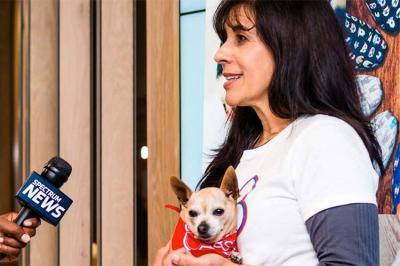
Public Relations and Working With the Media
Note: This is chapter 9 of Best Friends Animal Society's Grassroots Advocacy Toolkit.
While advocacy efforts don’t rely quite as heavily on traditional media (e.g., radio, television, and newspapers) as they did in years past, they’re still important to your campaign.
Here are some media relations fundamentals to keep in mind:
Home starts with you
- Your ideal message must be communicated in one short, simple, clear sentence. Messages that are too complex are difficult for the public to incorporate and too much of a hassle for most reporters to get right. Help them help you!
- Be prepared with relevant statistics and examples to support your message, but use them strategically. Inform but don’t overwhelm.
- Less is more in interviews. Aim for no more than three main talking points in shorter segments and no more than five in longer ones. More than that and you’re likely to dilute your message and confuse the reporter.
- Give reporters a story they haven’t heard before. And make it one they really want to tell.
- Avoid using animal welfare lingo, but if you do, explain what you mean. For example, don’t toss out the acronym TNVR without explaining what it means (trap-neuter-vaccinate-return). Think about terms that might need to be translated to more public-friendly language. For example, instead of “shelter intake,” say “shelter admissions.”
- Be sure to maintain control of the interview and guide the conversation in the direction that you want it to go.
- Practice before any interview if you have time. Use index cards and practice your talking points with people you know who aren’t familiar with animal welfare and your advocacy team. This will ensure that the average listener will understand what you’re saying.
- Anticipate questions you might be asked, especially the more challenging ones.
- Try to sound friendly and conversational while still maintaining professionalism and focus.
- Speak in simple, complete sentences. For TV or radio, repeat the question as part of the answer.
- Occasionally, reporters will leave a long pause after you finish speaking to get you to say more. Use the time if you want to, but don’t feel compelled to fill dead air space. Saying too much can lead you off-topic and muddle your message or inspire a question you’re not prepared to answer.
- Dress appropriately for in-person interviews. Avoid anything flashy or distracting. Your message should be the focus, not your ensemble.
- During on-camera interviews, look at the interviewer (rather than the camera) to help ease any anxiety and make you appear more personable.
- Be mindful of your body language. Avoid fiddling with your hair, clothing, or hands. Similarly, don’t involve an animal in an on-camera interview unless you’re already practiced with that animal and can ensure that your four-legged friend won’t distract you (or others) from the primary message.
- Silence your phone before the interview, and avoid looking at your phone until after you’ve excused yourself. People want to know that you value their time.
In an interview, it’s OK not to know the answer to every question, especially when you’re getting started. As long as you keep a few best practices in mind, you’ll be ready for those moments when you don’t have all the information.
Here are some tips:
- If you don’t know the answer, don’t panic or manufacture information. Let the interviewer know you’ll get the information and follow up as soon as possible.
- It’s OK to say “I don’t know” or “I’m not sure.”
- Always ask the interviewer to clarify or repeat a question you don’t understand.
- If you’re asked a question that would be better answered by another person, politely tell the reporter who that source of information is. If it’s appropriate, you can offer to contact that person and get back to the reporter.
- If you’re asked a question that requires you to speculate, simply say you don’t want to speculate.
- Remember that nothing is ever truly “off the record.” If you don’t want people to hear it, don’t say it.
